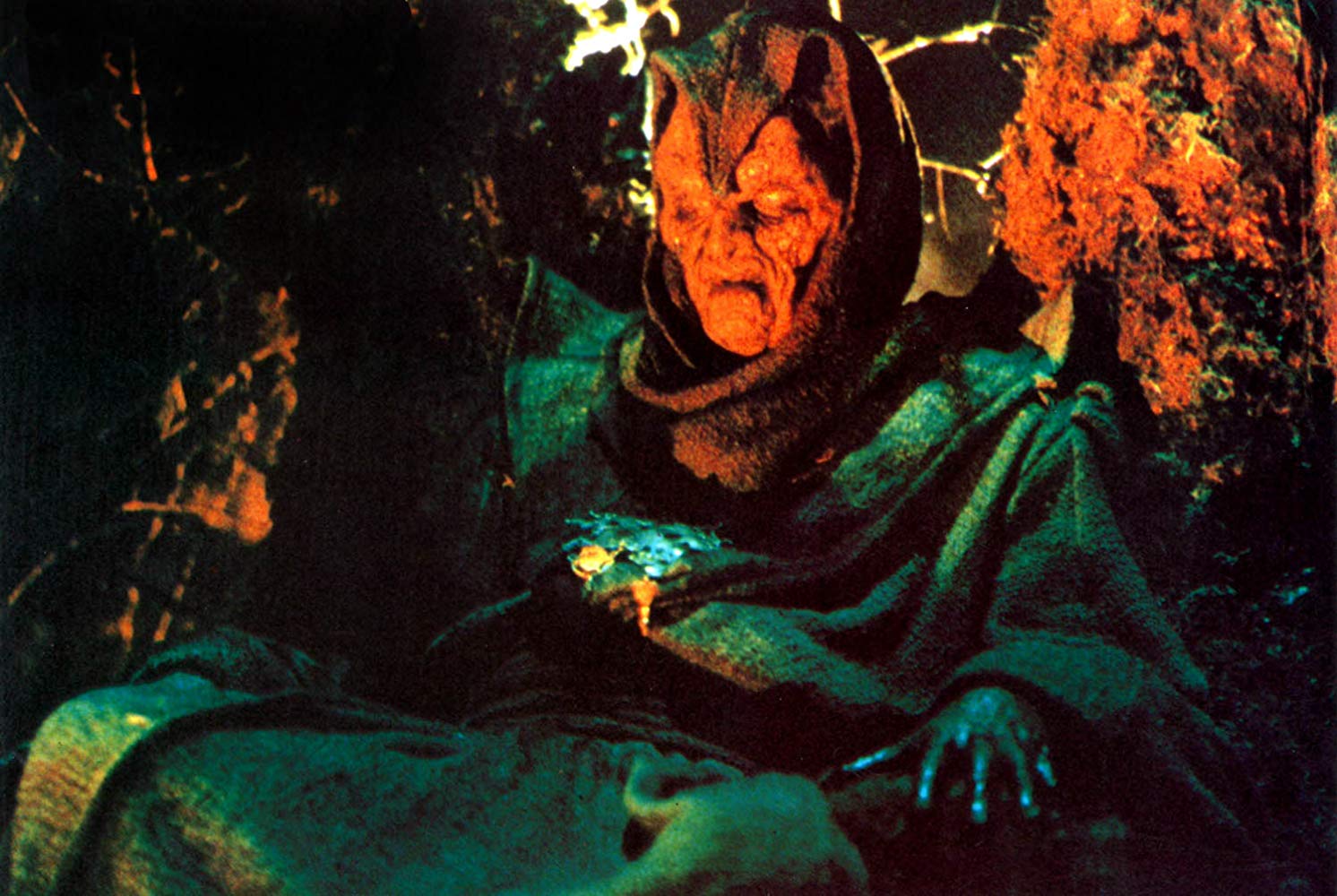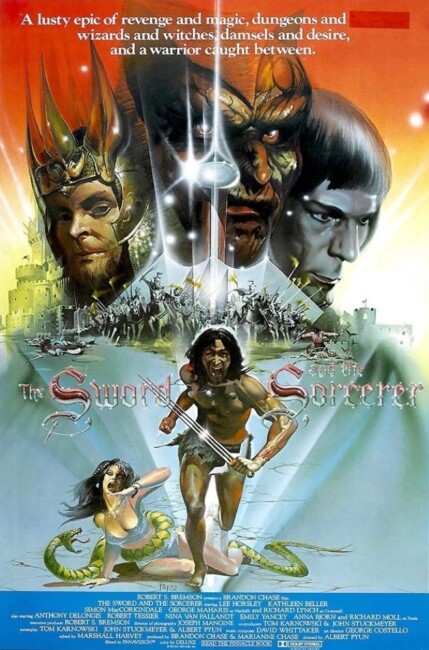USA. 1982.
Crew
Director – Albert Pyun, Screenplay – Albert Pyun, Thomas Karnowski & John Stuckmeyer, Producers – Brandon Chase & Marianne Chase, Photography – Joseph Mangine, Music – David Whitaker, Special Effects – John Carter, Jamie Shourt & Harry Woolman, Makeup Effects – Greg Cannom & Makeup Effects Lab (Allan Apone, Frank Carriosa & Douglas White), Art Direction – George Costello. Production Company – Sorcerer Productions/Group 1.
Cast
Lee Horsley (Talon), Richard Lynch (Titus Cromwell), Kathleen Beller (Princess Alana), Simon MacCorkindale (Prince Mikah), George Maharais (Count Machelli), Richard Moll (Xusia), Christopher Gary (King Richard)
Plot
Cromwell of Aragon revives the evil sorcerer Xusia from his tomb and uses his sorcery to overthrow the kingdom of Eh-Dan. The good King Richard is slaughtered but his son Talon manages to escape. Eleven years later, Talon returns, having fought his way up in the world to become a great warrior. Talon now unites the people of Aragon in a rebellion to overthrow Cromwell and Xusia.
The Sword and the Sorcerer attained a small amount of success by coming in quickly on the tail of the success of the Arnold Schwarzenegger Conan the Barbarian (1982). Indeed, it was the first of a number of films that jumped on the early 1980s sword-and-sorcery fad created by Conan.
The Sword and the Sorcerer crackles with authentic Robert E. Howard pulp spirit – many scenes like the crucifixion, the use of a leg of meat as a weapon and the revival of the sorcerer have been taken directly from Robert E. Howard Conan’s original stories. In fact, The Sword and the Sorcerer‘s vigorous pulp splendour is in some ways a more authentic translation of the spirit of Robert E. Howard than John Milius’s brooding, artistically-minded Conan film or the toothless Conan the Destroyer (1984) and Red Sonja (1985) were.
The Sword and the Sorcerer wears its low-budget charm with pride. Acting is about as brutal as the film’s hero and the cut-price sets thoroughly unconvincing. Most of the dialogue is cliche but at least the film delivers action in large, bloody, brutal amounts. There are some vigorously entertaining effects – hearts ripped out, spring-loaded swords and of course the aforementioned scene where the hero is crucified above the table at a banquet, rips his own nails out and then uses a leg of meat as a weapon to fight his way out. There is rarely a dull moment. The script also suffers from the cutting of an alleged hour’s worth of film, leaving often gaping holes of exposition in the numerous revolutionary plots.

The end credits promise a sequel Tales of the Ancient Empire. For many years, it was assumed that this was a forgotten curiosity but with the renewed interest in fantasy properties in the 00s, Albert Pyun made Tales of an Ancient Empire (2010), featuring a return performance from Lee Horsley.
The Sword and the Sorcerer was one of the better films of director Albert Pyun who has gone onto become a prolific director of genre B-movies. In particular, Pyun has made a large number of post-holocaust kickboxing cyborg films. Albert Pyun’s other genre films include:– Radioactive Dreams (1986), Vicious Lips/Pleasure Planet (1987), Alien from L.A. (1988), the uncredited Journey to the Center of the Earth (1988), Cyborg (1989), Deceit (1989), Captain America (1990), Dollman (1990), Brain Smasher: A Love Story (1993), Knights (1993), Nemesis (1993), Arcade (1994), Hong Kong 1997 (1994), Heatseeker (1995), Nemesis 2: Nebula (1995), Nemesis 3: Timelapse (1995), Adrenalin: Fear the Rush (1996), Nemesis 4: Death Angel (1996), Omega Doom (1996), Postmortem (1997), Ticker (2001), Infection (2005), Cool Air (2006), Bulletface (2007), Left for Dead (2007), The Interrogation of Cheryl Cooper (2014) and Interstellar Civil War (2017).
Trailer here


